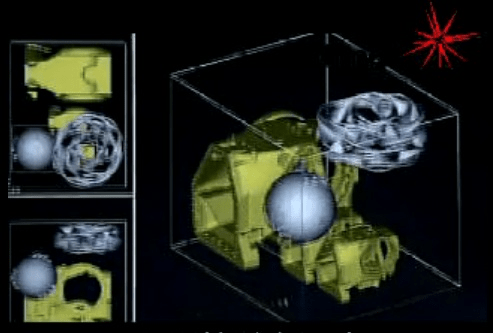By FE simulation in MSC Patran/Nastran, it has been performed the stress analysis of implant with different thickness configurations and 3d bending, which provides the optimized implant model with best fit dimensions. Flat implant configuration has been adapted by complex 3D bending in CAD software to be customized towards surface conformity of maxillofacial anatomy. Applied implant has been given in initial standard flat configuration. Then, the fixation points for shifted maxilla were determined by surgeon to provide steady and tight joints between implanting screws and maxilla. Since, the osteotomy is final application, it has been simulated the cutting and shifting of maxilla for proper correction by digital prototyping. Stl meshed surface has been imported into CAD software, as initial 3d structure, which is used for parametric and customized design of implant. This model is converted both, to stl surface model for rapid prototyping, CAD modeling and FE mesh for simulation purposes with keeping good volume and dimensional consistency. Then, it follows the medical image reconstruction into 3D voxelized model. Maxilla region has been recorded by Cone Beam CT with high resolution and optimal radiation.
This paper investigates the opportunity on implementing of FE simulation and rapid prototyping applied on titanium implant in maxillofacial surgery case based on osteotomy.



